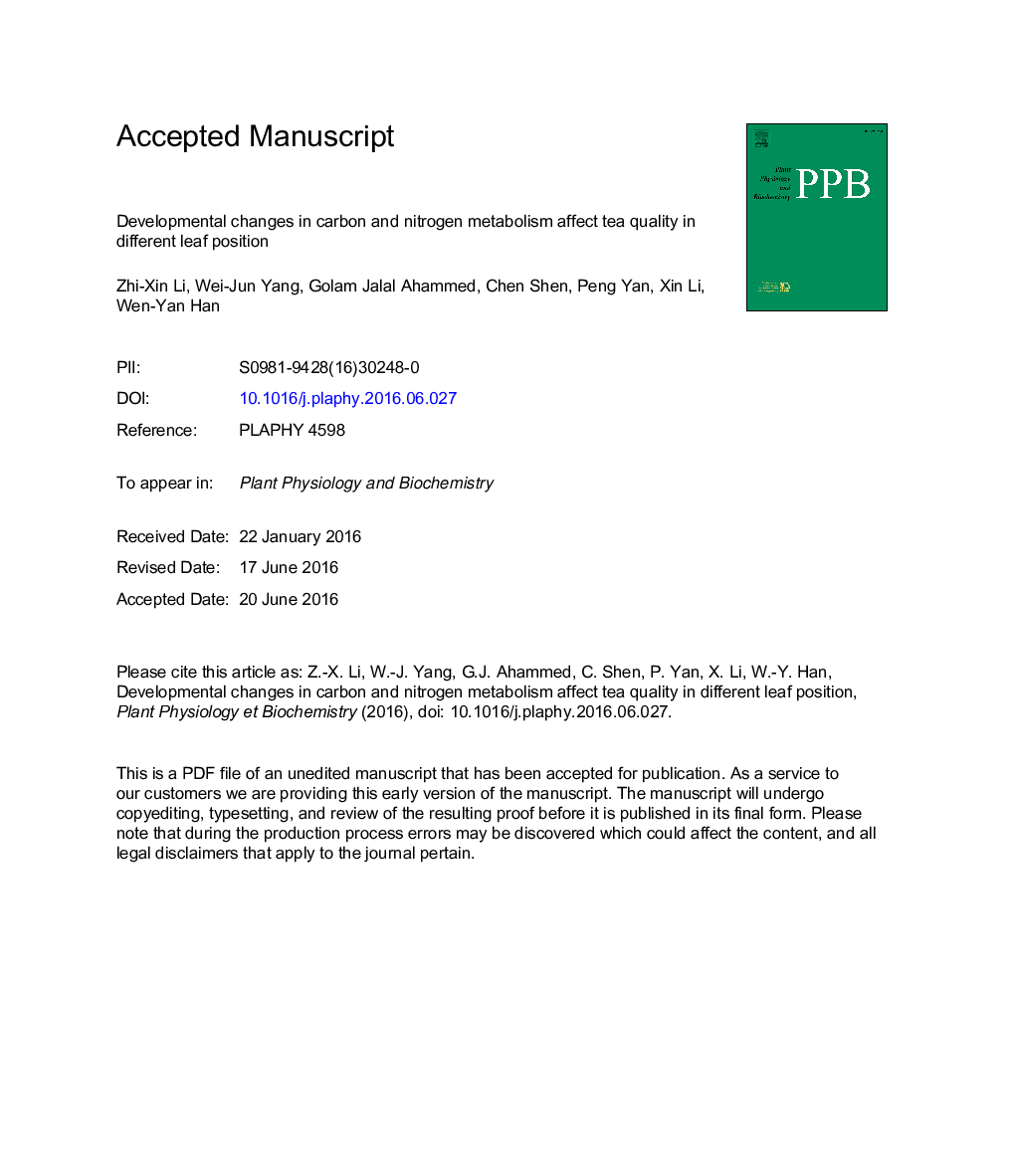| Article ID | Journal | Published Year | Pages | File Type |
|---|---|---|---|---|
| 8354060 | Plant Physiology and Biochemistry | 2016 | 43 Pages |
Abstract
Leaf position represents a specific developmental stage that influences both photosynthesis and respiration. However, the precise relationships between photosynthesis and respiration in different leaf position that affect tea quality are largely unknown. Here, we show that the effective quantum yield of photosystem II [ΦPSâ
¡] as well as total chlorophyll concentration (TChl) of tea leaves increased gradually with leaf maturity. Moreover, respiration rate (RR) together with total nitrogen concentration (TN) decreased persistently, but total carbon remained unchanged during leaf maturation. Analyses of major N-based organic compounds revealed that decrease in TN was attributed to a significant decrease in the concentration of caffeine and amino acids (AA) in mature leaves. Furthermore, soluble sugar (SS) decreased, but starch concentration increased with leaf maturity, indicating that source-sink relationship was altered during tea leaf development. Detailed correlation analysis showed that ΦPSâ
¡ was negatively correlated with RR, SS, starch, tea polyphenol (TP), total catechins and TN, but positively correlated with TChl; while RR was positively correlated with TN, SS, TP and caffeine, but negatively correlated with TChl and starch concentrations. Our results suggest that biosynthesis of chlorophyll, catechins and polyphenols is closely associated with photosynthesis and respiration in different leaf position that greatly influences the relationship between primary and secondary metabolism in tea plants.
Related Topics
Life Sciences
Agricultural and Biological Sciences
Plant Science
Authors
Zhi-Xin Li, Wei-Jun Yang, Golam Jalal Ahammed, Chen Shen, Peng Yan, Xin Li, Wen-Yan Han,
